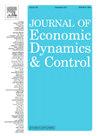在大冲击存在的情况下趋势周期分解
IF 2.3
3区 经济学
Q2 ECONOMICS
引用次数: 0
摘要
我们引入了贝弗里奇-尼尔森滤波器的一些改进,以帮助解决大冲击可能造成的扭曲。然后,我们比较了贝弗里奇-尼尔森滤波器和其他流行的单变量趋势周期分解方法在与新冠经济衰退相关的极端异常值的情况下的表现。在大流行之前的几年中,基于Hodrick-Prescott滤波器对产出缺口的实时估计是非常不可靠的,尽管大流行期间的修正估计与更可靠的贝弗里奇-纳尔逊滤波器的估计相似。汉密尔顿过滤器受到基数效应的影响,在大流行爆发整整两年后,在与过滤器视界一致的情况下,对估计的产出缺口产生机械峰值。考虑到模拟类似冠状病毒冲击的预测数据,Hodrick-Prescott和Hamilton滤波器都夸大了产出缺口的真实缩小,未能捕捉到趋势产出的隐含变动。Hodrick-Prescott滤波器在模拟冲击之前产生一个虚假的短暂繁荣,而Hamilton滤波器在模拟冲击后恰好两年后产生另一个机械峰值,以及输出缺口预测值偏离零的持续分歧。面对类似冠状病毒的冲击,只有贝弗里奇-尼尔森过滤器才能正确预测趋势和周期运动。本文章由计算机程序翻译,如有差异,请以英文原文为准。
Trend-cycle decomposition in the presence of large shocks
We introduce some refinements of the Beveridge-Nelson filter to help address possible distortions from large shocks. We then compare how the Beveridge-Nelson filter and other popular univariate trend-cycle decomposition methods perform given the extreme outliers associated with the Covid recession. Real-time estimates of the output gap based on the Hodrick-Prescott filter are highly unreliable in the years just prior to the pandemic, although the revised estimates during the pandemic are similar to those of the more reliable Beveridge-Nelson filter. The Hamilton filter suffers from base effects that produce a mechanical spike in the estimated output gap exactly two years after the onset of the pandemic, in line with the filter horizon. Given projected data with a simulated Covid-like shock, both the Hodrick-Prescott and Hamilton filters overstate the true reduction in the output gap and fail to capture the implied movements in trend output. The Hodrick-Prescott filter generates a spurious transitory boom just prior to the simulated shock, while the Hamilton filter produces another mechanical spike exactly two years after the simulated shock, as well as an ongoing divergence in forecasted values of the output gap away from zero. Only the Beveridge-Nelson filter correctly forecasts trend and cycle movements when faced with a Covid-like shock.
求助全文
通过发布文献求助,成功后即可免费获取论文全文。
去求助
来源期刊

Journal of Economic Dynamics & Control
ECONOMICS-
CiteScore
3.10
自引率
10.50%
发文量
199
期刊介绍:
The journal provides an outlet for publication of research concerning all theoretical and empirical aspects of economic dynamics and control as well as the development and use of computational methods in economics and finance. Contributions regarding computational methods may include, but are not restricted to, artificial intelligence, databases, decision support systems, genetic algorithms, modelling languages, neural networks, numerical algorithms for optimization, control and equilibria, parallel computing and qualitative reasoning.
 求助内容:
求助内容: 应助结果提醒方式:
应助结果提醒方式:


